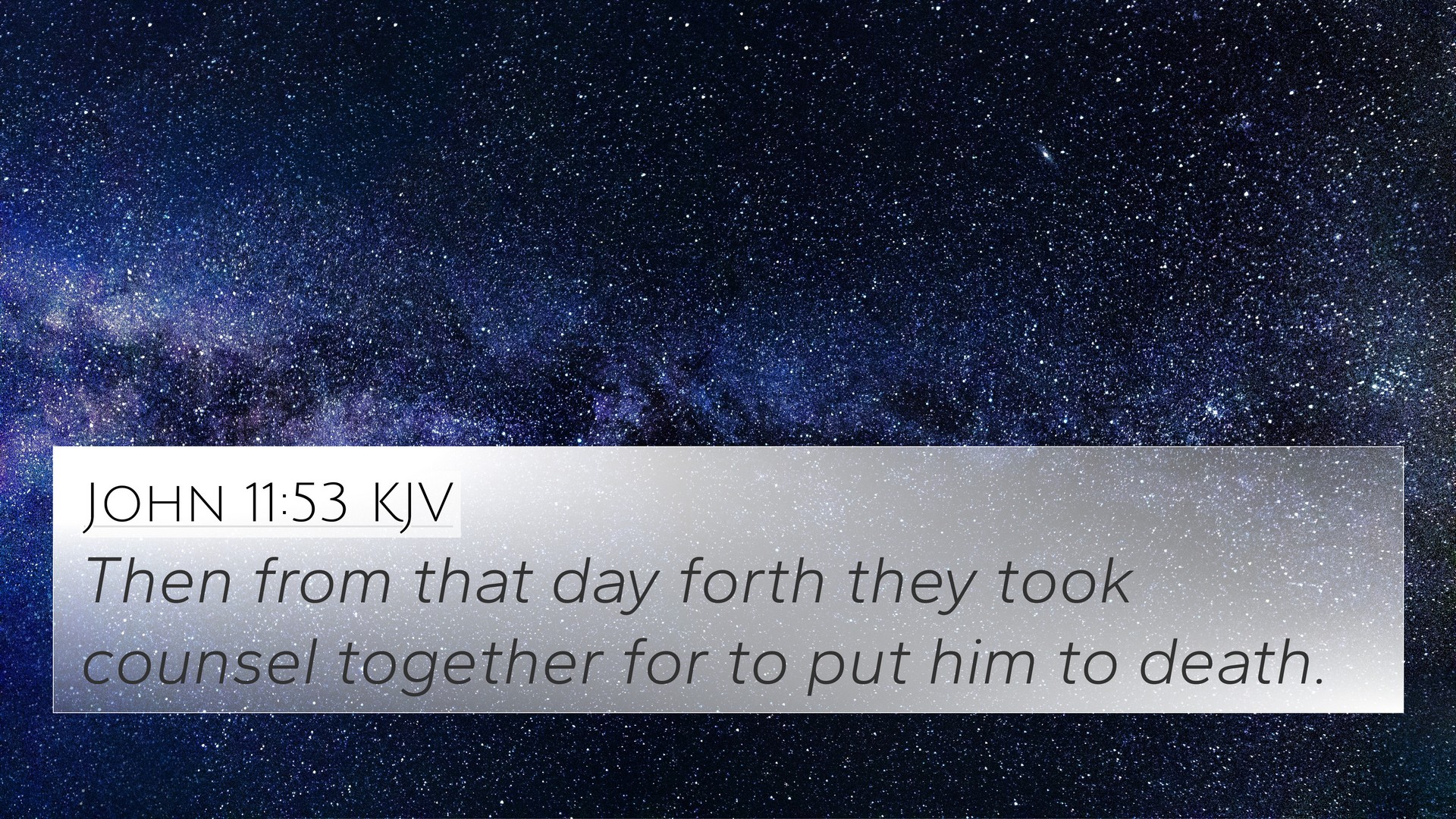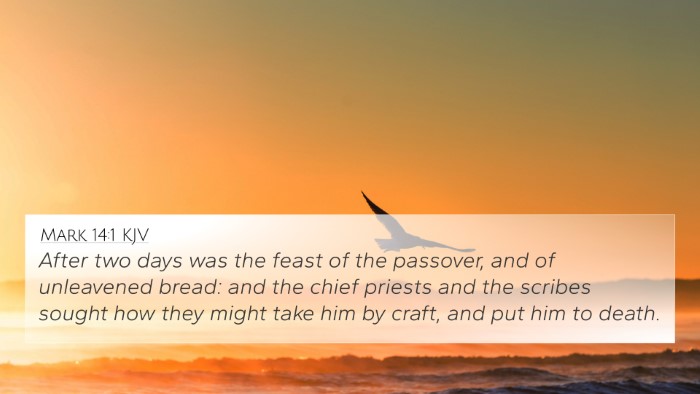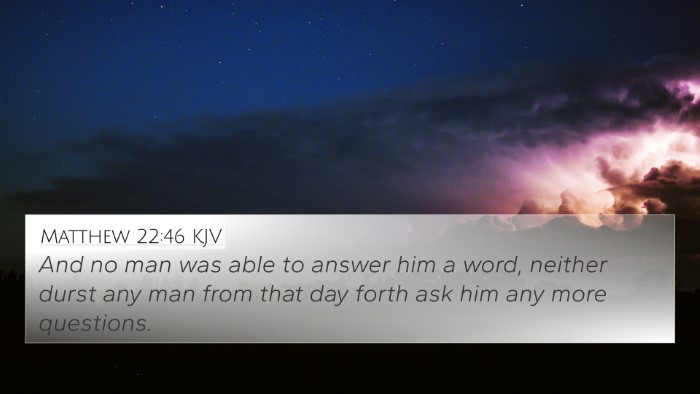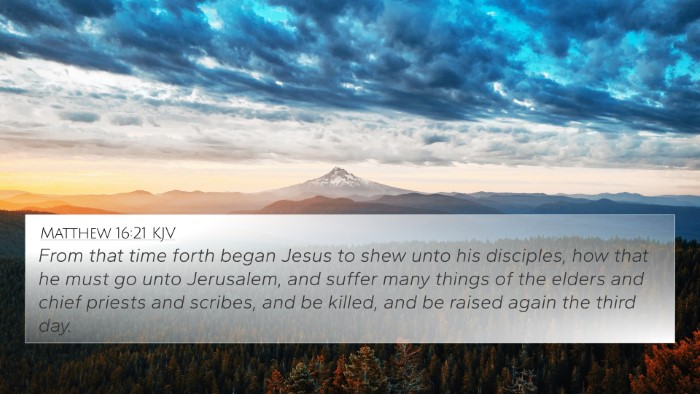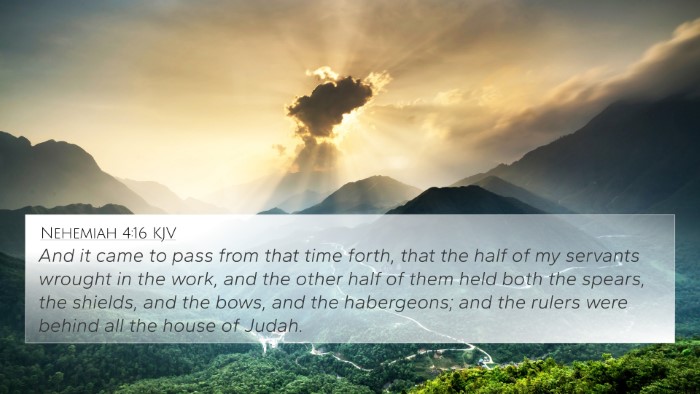Understanding John 11:53
John 11:53 states: "Then from that day forth they took counsel together for to put him to death." This verse marks a pivotal moment in the New Testament, highlighting the intense animosity that the religious leaders had towards Jesus.
Summary of Insights from Public Domain Commentaries
Matthew Henry's Commentary emphasizes the gravity of the decision made by the Jewish leaders. He notes that the plotting to kill Jesus signifies a completed resolve to reject Him, viewing His growing influence as a direct threat to their authority and beliefs.
Albert Barnes reflects on the collaboration of the chief priests and Pharisees to conspire against Jesus. He highlights the moral implications of their actions, as they deliberately seek to extinguish the life and ministry of an innocent man, driven by jealousy and fear.
Adam Clarke interprets this verse within the larger context of John 11, particularly the miracles of Jesus. Clarke observes that the resurrection of Lazarus was a significant event that prompted this conspiracy, as it demonstrated Jesus' divine authority, causing the leaders to act with urgency against Him.
Thematic Connections and Cross-References
This verse serves as a critical point in the narrative of Jesus’ ministry, highlighting the intersection of divine purpose and human opposition. Below are several related Bible verses that help deepen the understanding of this theme:
- Matthew 26:4: Describes the Jewish leaders plotting to take Jesus by subtlety and kill Him.
- Luke 22:2: Similar to Matthew, depicts the chief priests and scribes seeking how they might kill Jesus.
- John 5:18: Illustrates the reasons behind the Jewish leaders' anger at Jesus for claiming God as His Father.
- John 7:1: References the danger Jesus faces from the Jewish authorities, emphasizing their intent to harm Him.
- Acts 2:23: Highlights the foreknowledge and predestined plan of God regarding Jesus’ death through wicked hands.
- Acts 4:27: Notes the fulfillment of prophecy as leaders conspiring against Jesus in Jerusalem.
- Isaiah 53:3: A prophetic statement concerning the rejection of the Messiah, unworthy of their acceptance.
Insights from a Cross-Referencing Perspective
Linking Bible scriptures provides a practical approach for understanding the theological depth of John 11:53. By engaging in comparative Bible verse analysis, one sees the recurring themes of opposition, conspiracy, and divine fulfillment throughout the scriptures.
Tools for Bible cross-referencing, such as a Bible concordance or cross-reference guide, can aid in locating these vital connections:
- Cross-reference Bible study: This method enhances understanding by illustrating how various Biblical narratives support or contrast with each other.
- Identifying connections between Old and New Testament: Notably, the connections between prophecies of the Old Testament and their fulfillments in the New Testament.
- Interpreting Biblical themes through cross-references: Analyze the themes of suffering and rejection as they are seen in John 11:53 and echoed throughout the scriptures.
Conclusion: The Importance of Cross-Referencing
The examination of John 11:53 illustrates the significance of cross-referencing Biblical texts. By understanding how various verses interrelate, readers gain deeper insights into the overarching narrative of the Bible.
For those committed to a comprehensive Bible study approach, employing a Bible cross-reference system can greatly enhance your studies, leading to richer interpretations of scripture.
